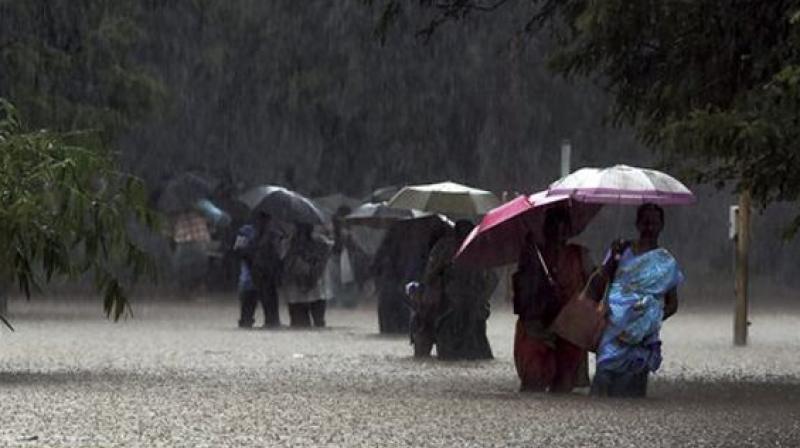When Musi sank Hyderabad 110 years ago
Extraordinary rainfall of September 26 and 27, 1908, was due to a cyclonic storm in the Bay of Bengal.

Hyderabad: The flooding of the Musi on September 28, 1908, has been recorded as the most destructive ever in Hyderabad, washing away 50,895 houses and claiming the lives of thousands.
The floods followed heavy rains that ravaged the Deccan for 48 hours and left an estimated 15,000 people dead.
The affected localities were Karwan, Kulsumpura, Sabzi Mandi, Petlaburj, Chowmohalla, Patherghatti, Chatta Bazaar, Jiaguda, Mustaidpura, Goshamahal, Troop Bazaar, Chudi Bazaar, Siddiambar Bazaar, Mahbubgunj, Afzalgunj, Feelkhana, Gowliguda, Koti, Sultan Bazaar, the Osmania Hospital, Puranapul.
City historian Muhammad Safiullah said that meteorologists had found that at intervals of 20 or 30 years, the river becomes swollen for a few hours, overflows and submerges the settlements along the banks. Once in 50 or 100 years a more serious flood occurs, sweeping away a great width of the city and taking a heavy toll of human life, cattle and property.
The extraordinary rainfall of September 26 and 27, 1908, was due to a cyclonic storm in the Bay of Bengal.
“The river rose to about 15’ to 20’ feet in the inhabited area on both sides, enveloping houses and property for an average width of half a mile. Numerous lives were lost and about one quarter of the entire population was rendered homeless,” says Dr Safiullah.
“Large areas of populous quarters were demolished in the space of three or four hours. It is said that in Kolaswadi alone about 2,000 people were surrounded by the flood waters and all of them were drowned or washed away,” he says.
At Ghansi Miyan Bazaar, a large group of people, variously estimated at between 500 and 3,000m climbed the city wall near Petla Burj, some to watch the flood and others to seek refuge. The wall was undermined and eroded. With the result, all this mass of humanity was overtaken and swept away.
A big tree near Kolsawadi to which about 150 people had cling for safety was swept away along with its human burden. A large house near the locality with about 150 people was eventually engulfed.
Water rose within two feet of the roof of the Victoria Zenana Hospital, but nearly all the patients were saved, together with the lady doctor who stood by them. More people were killed by falling houses, than by drowning.
Mahbub Ali Khan, the VI Nizam, was deeply affected by the calamity. Hindu priests and Moulvis approached the Nizam stating that the river goddess was angry, and that she had to be propitiated.
Mahbub Ali Khan, dressed in Hindu costumes and wearing kumkum, offered gifts of a sari, gold, silver, diamonds, pearls and kumkum to the river, amidst the chanting of mantras. The Musi, which was receding, showed perceptible reduction in depth.
Following the floods, Mahbub Ali Khan visited the flood-hit areas along with his Prime Minister Maharaja Kishen Pershad. The Nizam called the reputed engineer, Sir M. Visvesvaraya, to help prevent a similar flood.
The solution devised by Sir Visvesvaraya involved creating storage reservoirs upstream of the city that would control floods by storing water.
On Mahbub Ali Khan’s demise, his successor, Mir Osman Ali Khan, the Nizam VII, implemented his recommendations. The last Nizam constructed the Osmansagar and Himayatsagar, in addition to a new drainage system.
The squalid and overcrowded residential areas along the riverbank were transformed into parks and boulevards beyond which the Osmania General Hospital, the High Court and the State Central Library were constructed.
The high income group and middle income group housing scheme was also implemented.

